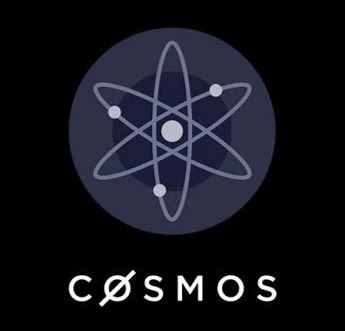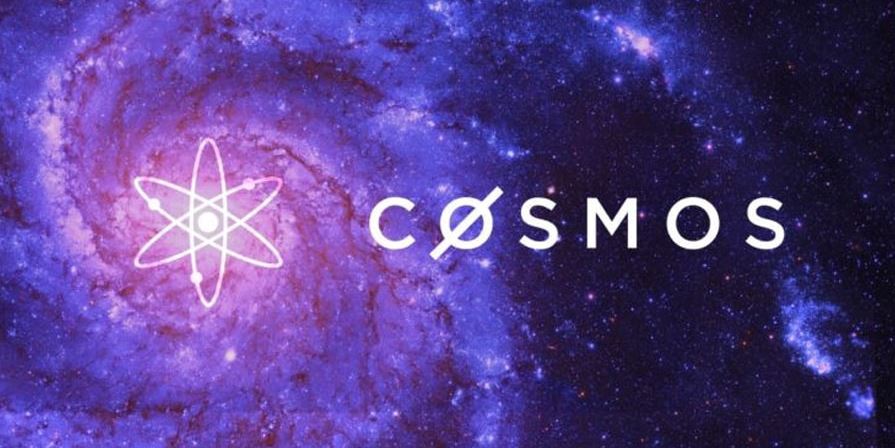Cosmos is a blockchain technology that helps different blockchains to interact with each other. Its native cryptocurrency is the ATOM to pay fees on the network. In this article we discuss what is Cosmos and the technology behind it.
What is Cosmos (Atom)?
Cosmos (ATOM) is more than just a new blockchain, it’s a solution to solve interoperability. Imagine being able to move digital information as easily as sending an email from Gmail to Yahoo. That’s what Cosmos aims to achieve for blockchain networks.
Cosmos wants to be the big connector – the “Internet of Blockchains”. It’s a place where different blockchains can chat and cooperate without anyone taking charge of these talks. It’s a whole network where each blockchain keeps its independence but can still mingle and work with others.
Now, how does Cosmos pull this off? It’s got a few tricks up its sleeve:
- Tendermint Consensus Algorithm: This is the heartbeat of Cosmos. To secure the network Cosmos SDK uses the Tendermint Byzantine fault tolerance (BFT) engine consensus protocol. Think of it as the rulebook that keeps the game fair. It’s what keeps the network safe and gets everyone on the same page regarding transactions.
- Inter-Blockchain Communication Protocol (IBC): Imagine IBC as a series of bridges linking different islands (each a blockchain). It lets these blockchains whisper, share secrets (data), and pass around tokens without any hiccups.
- Cosmos Software Development Kit (SDK): This is the ultimate toolkit that allow developers to build blockchains. It’s like a set of Lego blocks for adults, letting developers craft their very own blockchain for various uses, all ready to plug into the Cosmos network.

And the star of the show? The Cosmos Hub. It’s the first blockchain that launched in this network, acting like central station keeping tabs on all connected blockchains, or “zones” as they call them.
What about ATOM, the cryptocurrency of Cosmos? It’s more than a digital cash. It’s the glue that holds Cosmos together, helping to secure the network. When you own ATOM, you’re not just holding a currency – you’re part of the Cosmos community, voting on changes, and earning rewards for helping out.
How Does Cosmos Work? – Cosmos Hub, Zones, IBC and Cosmos SDK
Imagine Cosmos as a vibrant city with its own unique layout. In the heart of this city lies the Cosmos Hub, much like the downtown area. It’s the central piece that holds the entire network together. Just like a city center keeps track of all the happenings in town, the Cosmos Hub keeps an eye on all the connected Zones, which are like various neighborhoods, each with its own character and rules.
Cosmos Hub and Zones
The Cosmos Hub is where all the action happens. It’s not just a passive observer, it’s actively involved in the network’s safety and keeps detailed records of each Zone’s activities. The Hub uses the ATOM token for more than just transactions – it’s also a key player in maintaining the network’s governance and security.
There are platforms within the Cosmos ecosystem that use smart contracts to communicate each other. In this way it’s possible for example to take one token to another platform by firstly lock the token on a platform and then minting the corresponding amount on the other. Wrapped token is the most known process for this.
The Zones are the diverse neighborhoods of our Cosmos city. Each Zone is an independent blockchain with its own applications, tokens, and ways of doing things. However, what’s really cool about them is their ability to talk to each other and the Hub, all thanks to the Inter-Blockchain Communication (IBC) protocol. This setup allows each Zone to be unique and innovative, serving specific purposes and communities.
IBC and The Cosmos SDK
Think of the IBC protocol as the intricate network of streets and bridges that connect these neighborhoods. It allows for the smooth and secure movement of information and assets between different blockchain networks. It’s like having a universal language that everyone in this blockchain city understands, which makes exchanging things a breeze.
And underpinning all of this is the Cosmos SDK, the city’s toolkit, what was developed by the Cosmos team. This is what developers use to build their own Zones. It’s loaded with ready-to-use building blocks for common blockchain functions (i.e., staking or governance), but it’s also flexible enough for developers to add their unique features. The Cosmos SDK is what makes it possible to keep building and expanding this city in an organized, efficient way.
The History of Cosmos Crypto
Cosmos began in 2014, born from the idea of Jae Kwon and Ethan Buchman to enhance blockchain technology. They envisioned a system where various blockchains could collaborate while remaining secure and independent. This idea led to creating the Tendermint consensus algorithm, forming Cosmos’ base.
The Cosmos vision was further detailed in a 2016 white paper, envisioning a decentralized network of interconnected blockchains. The software itself came to life in 2019.
2017 was a milestone year with Cosmos’ initial coin offering (ICO) for the ATOM token. This fundraiser, bringing in over $17 million, was key in transitioning Cosmos from concept to reality.
Continuous Growth and Development
From then on, Cosmos has been on an upward trajectory. More blockchains have joined, each using the network. The Cosmos team has been busy too, upgrading the Tendermint consensus, the Cosmos SDK, and the IBC protocol.
In Cosmos, the ATOM token is more than digital money. It’s a key part of how the network operates, especially in validation, managing nodes, staking, and governance, ensuring that Cosmos stays robust and decentralized.
The ATOM Token In The Cosmos Ecosystem
ATOM is the native token of Cosmos and it is a key part of the Cosmos ecosystem, functioning as more than just a cryptocurrency. It plays a central role in the network’s operation, particularly in areas like validation, node operation, staking, and governance. Each of these elements contributes to the robust and decentralized nature of Cosmos.

Validating and Nodes
Validators are the ones who check and confirm transactions in Cosmos. They’re chosen based on how much ATOM they own and commit to the network. Operating a validator node is a big job. These are strong computers that check transactions and help make decisions that keep the network safe and running well.
Staking
Staking is central to keeping Cosmos safe and making decisions. People who own ATOM can lock their tokens to support a validator. This helps keep the network secure and lets them earn rewards. The idea is straightforward: if you have a stake in the network, you’re motivated to look out for its best interests.
If a validator doesn’t do their job right, they and their supporters could lose some of their staked ATOM. This way, everyone’s interests are aligned with the network’s well-being, and this is why it’s worth to support more validators instead of only one.
Governance
Having ATOM means you get to help make decisions in Cosmos. This involves voting on everything from technical changes to policy updates. The decision-making process is open and driven by the community. The more ATOM you stake, the more say you have. This makes sure that the people involved in Cosmos are the ones guiding its path, keeping it a truly community-run network.
Cosmos Versus Ethereum
When exploring blockchain technology, Cosmos and Ethereum often pop up as two major platforms. They’re both influential, but they have different designs, ways of reaching consensus, and strategies for how blockchains can work together.
Architecture and Interoperability
Ethereum can be seen as a global computer, where every decentralized application is hosted on a single platform. This model is simple and unified but can lead to network congestion, expensive fees, and delays during high-demand periods.
Cosmos, however, adopts a different strategy. It functions as a collective of independent blockchains, each capable of communicating through the Inter-Blockchain Communication (IBC) protocol. This setup aims to distribute activity over several blockchains, reducing the likelihood of overload on any single chain.
Consensus Mechanisms
Initially, Ethereum employed a Proof of Work (PoW) mechanism, demanding significant computational resources. It’s transitioning to a Proof of Stake (PoS) system in Ethereum 2.0 for greater energy efficiency.
Conversely, Cosmos has utilized PoS from its inception, particularly through the Tendermint consensus. This choice not only conserves energy but also guarantee transaction speed and scalability.
Flexibility and Customization
Ethereum is famous for its ability to create a wide range of DApps, thanks to its smart contract functionality. However, developers working with Ethereum face certain limitations, such as the specific programming requirements and shared resources.
On the other hand, Cosmos offers more flexibility to developers. They can create their own blockchain systems, with unique governance and consensus rules. The Cosmos SDK provides the tools needed for such development, allowing for more specific solutions tailored to various sectors.
Governance
Governance in Ethereum is more informal, primarily guided by its community and key developers. Proposals for changes undergo community discussions before being implemented.
Cosmos, however, incorporates a formal governance mechanism within its protocol. ATOM token holders have the power to propose and vote on changes, with their voting strength proportional to their stake. This method in Cosmos promotes a more orderly and democratic process for decision-making.
Is ATOM a Good Investment?
If you read the article you can think ATMOS is a good digital asset to invest. And we think you may be right. As more and more blockchain launched on the Cosmos network the trust in it could spread.
However it’s all-time high was in the end of 2021 with it’s price of $44.7. At the date of writing it worth $11.46. But the crypto world predicts a bull market is incoming. So if you want to buy Cosmos you can do it on most crypto exchanges like Binance or Kraken easily. After buying it to store ATOM crypto you can use almost any kind of wallet as most of them are compatible with this cryptocurrency. For a detailed guide about wallets you can read our article here.
Featured image source: topbrokeri




